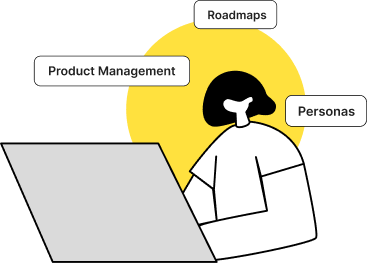The ingredient list of a successful product and design team consists of a dash of knowledge, a pinch of experimentation, a cup of creative energy, and a spoonful of trust. Or that’s the basic recipe, at the very least.
When a team grows from one or two individual contributors to a larger, more diverse one, it requires work to ensure that everyone is set up to be a high performer. So, let’s have a look at the characteristics of a successful product and design team.
United with Product Mission and Vision
Even when the team is immersed in their specific area, a high-performing product team is also constantly focused on the big-picture corporate purpose. While a team has a consistent knowledge of the broad goals, they will all be heading in the same general direction when dealing with their respective focal areas. When a product team is out of sync, it sends a confusing message to the rest of the firm, resulting in less effective planning and a loss of rapport. Therefore, it is critical to articulate the Mission, Product Visions, and Strategy regularly, until the team begins to incorporate them into their everyday activities. And by paying attention to the different pieces of the jigsaw, they work on fitting them together. This prevents individuals from becoming overly engrossed in their sector while also ensuring that every choice they make is done with the larger picture in mind.

Quality Enhancement in the Products
A high-performing team will continually strive to improve, both as a collective and as individuals. This enhances the quality of their product while also demonstrating their dedication to excellence by beginning with oneself. Many of these enhancements will be connected to procedure and communication at the team level. Consider increasing efficiency, boosting quality control, simplifying operations, and so forth—anything that increases productivity while minimizing unnecessary overhead. Individually, it entails understanding how the technology works for the development teams, obtaining product insights from customer success, and contacting the sales team for information on what is connecting with consumers and what is missing. Simply put, it requires everything that helps them have a deeper understanding of the market, technology, and trends affecting the company and the product.

Exceptional Product and UX Designer
The standard for product design is always rising. The product should not only greatly improve the lives of its users but also instantly develop trust via outstanding visual design and branding. The product’s usability must be consistent across all devices and marketing touchpoints. To achieve this, the team must have someone who is good at product design and has UX expertise. A skilled product designer will grasp how typefaces, logos, color, calls-to-action, iconography, animation, transitions, and pictures all contribute to a product’s overall look and feel. A competent product designer will also have expertise and knowledge of UX patterns that people are accustomed to while using digital products. This enables them to make quick product choices that are known to work and require innovation only sometimes.

An outcome-focused team
When a team can focus on results rather than being evaluated purely on release, it can perform at its peak. Under such a scenario, the result could be an increase in the conversion rate of people signing up for your product in the following month. The product team may then collaborate to determine the most effective means of accomplishing this goal, with each member taking responsibility for the result. Results-based organizations provide defined responsibilities to teams, require them to remain connected with customers, foster team buy-ins, and avoid a top-down organizational structure in their operations.

Open to All Feedbacks
High-performing product teams demand the most recent and up-to-date information from all relevant sources. As a result, they need both customers and employees to share issues, opinions, and ideas with them frequently. To keep this feedback coming in from all directions, product teams must establish an atmosphere where contributions are welcome rather than perceived as personal criticism. The product team must create a positive feedback loop, in which recommendations are not only acknowledged but also encouraged and implemented. When coworkers see that the product team values their feedback and puts it into action, they are more willing to send them ideas rather than simply grumbling to their internal team members. Product managers that can establish and convey a clear and consistent product vision while also regularly reviewing it are the best.


